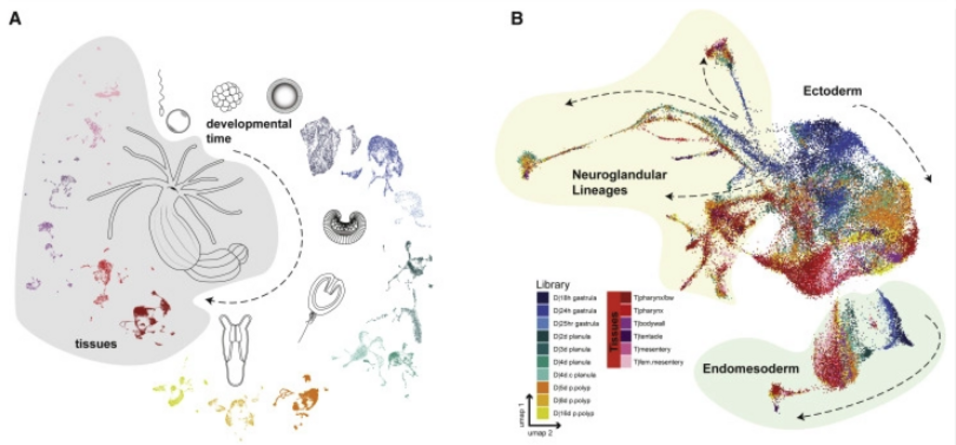We present a temporal and spatially resolved single-cell RNA-seq atlas of a sea anemone that recapitulates development and homeostasis. Differentiation trajectories are shown to be maintained throughout the life cycle of Nematostella vectensis, in which SoxC specifies a neuroglandular progenitor population that differentiates into neurons, gland cells, and cnidocytes.
Link to paper: Cell

